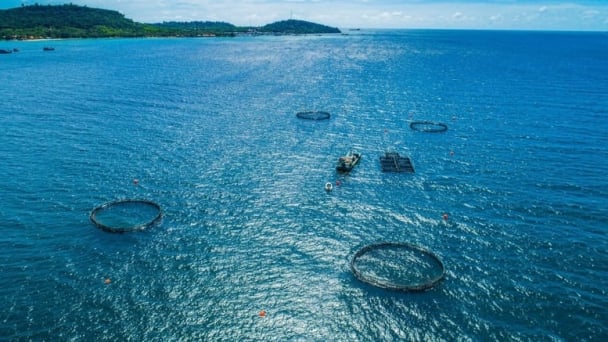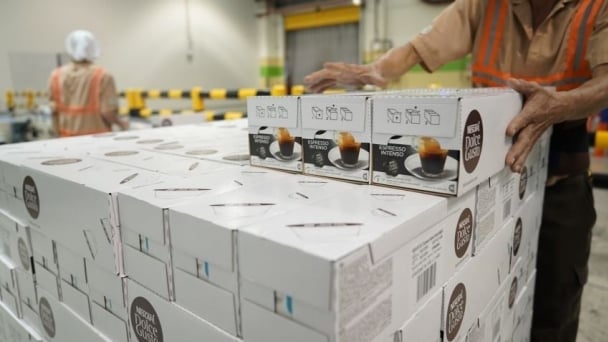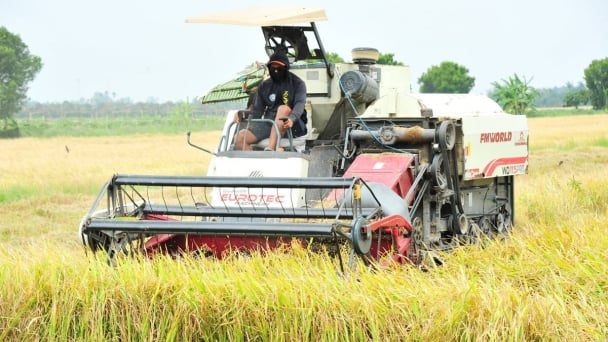April 26, 2025 | 09:20 GMT +7
April 26, 2025 | 09:20 GMT +7
Hotline: 0913.378.918
April 26, 2025 | 09:20 GMT +7
Hotline: 0913.378.918
Solar energy expansion is often viewed as a threat to US food security. And yet roughly 12 million hectares of US farmland—an area the size of New York State—is currently devoted to corn crops that are farmed not for food, but for fuel.
In a new PNAS study, researchers ask a provocative question: why not transition some of this corn-for-ethanol farmland to significantly more efficient solar energy production instead? They find that populating just a tiny percentage of that land with solar panels would dramatically increase the US’s solar energy output, while also relieving significant ecological pressures on the land.
“People want to see farms grow food, and I think most people would agree with that opinion. The motivation here was to understand whether ecovoltaic solar could be a more effective land use strategy than using 12 million hectares to grow corn for fuel,” says Matthew Sturchio, a researcher at the Cornell University College of Agricultural and Life Sciences, and lead author on the new paper.
The PNAS research also joins another recent study, published in Nature Sustainability, in highlighting the economic benefits that these solar panels could bring to farmers.
The new findings are rooted in the unique US context, where for 20 years, the government has mandated that gasoline must be blended with a certain amount of biofuel, such as ethanol made from corn. This has led to an expansion of corn farming for ethanol, which explains the New York State-sized area that’s now devoted to growing biofuels.
The researchers on the PNAS paper first set about identifying corn-for-ethanol farmland on maps across the US. Then they streamlined their search to only consider corn-for-ethanol farms that were within about 3 kilometres of electrical transmission sites. This was to ensure that they selected only those farms where solar energy production would be close enough to feed into the grid, and would therefore be most realistic.
Their first discovery was that about 391,137 hectares of current corn-for-ethanol farmland are in this prime position. This area represents only 3.2% of all the land currently devoted to corn ethanol farming. And yet strikingly, converting even just this tiny area of land to solar could yield the same amount of energy as all corn ethanol farming does annually in the US. The modest conversion would increase the share of solar energy in the US energy mix from 3.9 to 13%.
The researchers then went further, showing that if farmers took a bold leap and covered 46% of land currently used to farm ethanol with solar panels, that would then generate enough energy to reach the 2050 decarbonization goal for the US.
The comparison shows the much lower efficiency of growing corn for energy, compared to solar production. In fact the study says that it would require about 31 hectares of corn ethanol to produce the same amount of energy generated by one hectare of land covered in solar panels.
This raised some interesting questions about the amount of resources that are poured into farming corn. The researchers found that replacing crops with panels on just 3.2% of farmland would reduce the use of nitrogen and phosphorus fertilizer by about 54.8 million kg and 26.3 million kg, respectively. It would also reduce the need for irrigation across this terrain. What’s more, the land beneath solar panels can be planted with perennials and wildflowers that can help to stabilize soils and reduce run-off, sequester carbon, and diversify farmland with pollinator-friendly plants.
Then there’s the potential economic benefit of installing solar panels on cropland, which might help reassure skeptical farmers. The new study notes that previous research shows farmers who lease their land to solar developers can earn between three and four times more per acre than most crops bring in.
That’s echoed by the results of the other new study on solar panels and farmland, just published in Nature Sustainability. This research finds that farmers who devote a small percentage of their land to solar panels are more financially stable than those who either go full solar, or incorporate no panels on their land. These crop- and solar-producing farms spend less on fertilizers and irrigation. Meanwhile, the income from selling energy, offsets any income lost by farming fewer crops the study reports.
There is ongoing resistance to solar panels on farms, which includes moratoriums on installing them in certain areas, say the authors of the PNAS research. But this is set within the reality of a rising energy demand in the US, which is expected to grow by between 33 to 75% by 2050.
Looking at how the land and its resources can meet that need, the new findings suggest that solar panels may be much more of a boon to farmers and food systems than a threat: “Ecologically-informed solar energy facilities can reduce the land use footprint of energy production in croplands, help diversify and restore wildlife habitat in homogenized agricultural landscapes, reduce fertilizer inputs, filter fertilizer runoff, and rapidly contribute to emissions reduction goals,” Sturchio says.
anthropocenemagazine

(VAN) Vietnam aims to effectively implement marine biodiversity conservation initiatives and the Fisheries Strategy, thereby improving the livelihoods of coastal communities and fishermen.
/2025/04/24/4049-1-203511_87.jpg)
(VAN) The Ministry of Finance continues to research and propose an effective, feasible plan for organizing, developing, and launching a carbon credit exchange in Vietnam.

(VAN) Innovation is regarded as a critical solution for the promotion of sustainable, rapid development, which is intended to lead to a green economy.

(VAN) Mr. Binu Jacob, General Director of Nestlé Vietnam, believes that circular economy is an essential step not only for businesses but also for the whole society's sustainable development.

(VAN) Nui Chua Biosphere Reserve was recognised by UNESCO’s International Coordinating Council of the Man and the Biosphere Programme in December 2021 and is one of the 11 world biosphere reserves located in Vietnam.

(VAN) Entering the 'Era of National Advancement,' the rice industry aims to enhance value and quality in the context of global market integration and development.